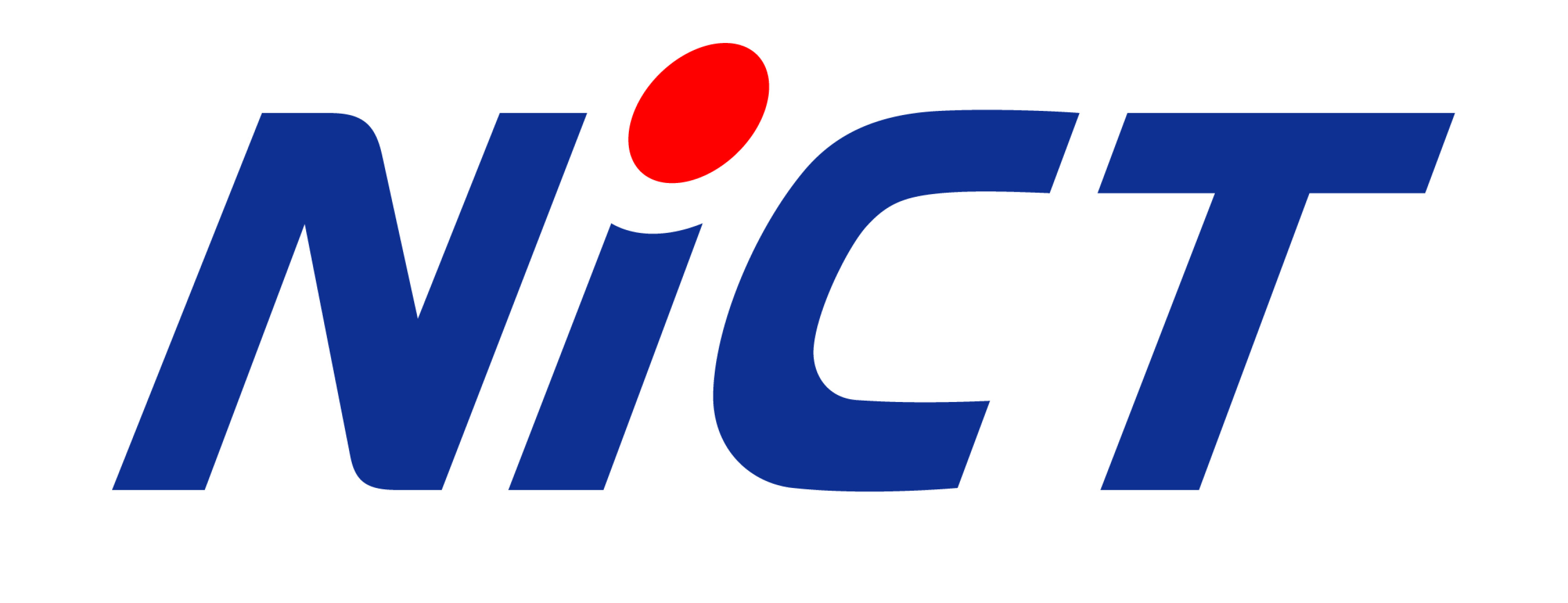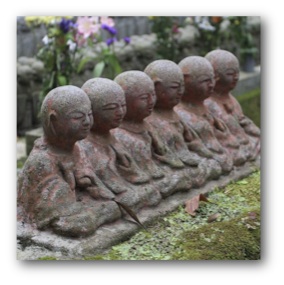







![]()




INTERSPEECH 2010 Satellite Workshop on
"Second Language Studies:
Acquisition, Learning, Education and Technology"
Co-organized by AESOP, SLaTE, NICT & LASS
September 22-24, 2010,
The International Conference Center,
Waseda University, Tokyo, Japan.
AESOP: Asian English Speech cOrpus Project
SLaTE: the ISCA SIG on Speech and Language Technology in Education
NICT: National Institute of Information and Communications Technology
LASS: Language And Speech Science of Waseda University
L2WS'2010 Technical Program and Abstracts (PDF)
Aim of the workshop:
INTERSPEECH 2010 Satellite Workshop on Second Language Studies will be held at the International Conference Center of Waseda University in Tokyo, immediately before the main conference. The aim of the workshop is for people working in speech science and engineering, linguistics, psychology, and language education to get together and discuss second language acquisition, learning, education and technology. The workshop theme is interdisciplinary, ranging over but not exclusive to spoken and written L2 acquisition and learning, designing and constructing corpora for language research, speech science and engineering, and their application to education. The workshop is 'trans-disciplinary' and all theoretical and practical topics will be considered.
Special session:
One day before the workshop, we hold an open symposium on "Primary School English Education in Asia". During the workshop, a spechal session is planned, which deals with some specific topics related to primary school English education. This session is organized as a panel discussion among leading teachers and educators of China, Korea, Taiwan, and Japan. See details of the open symposium.
Oral Session 1: Perception of a Second Language
chaired by Chiu-yu Tseng
Overview of the papers of this session (10min)
O1-1: Second-Language Experience and Speech-in-Noise Recognition: the Role of L2 Experience in the Talker-Listener Accent Interaction
Melanie Pinet, Paul Iverson, Mark Huckvale
O1-2: Inter- and Intra-L1 Differences in L2 Speech Perception
Jeffrey J. Holliday
O1-3: Categorizing Mandarin Tones into Japanese Pitch-Accent Categories: The Role of Phonetic Properties
Connie K. So
O1-4: A Pilot Study on Perception of Spanish Stress by Japanese Learners of Spanish
Takuya Kimura, Hirotaka Sensui, Miyuki Takasawa, Atsuko Toyomaru, José Joaquín Atria
Poster Session 1: Teaching and Learning Environment
P1-1: A Resource for Learning Swedish Oral Skills
Linda Ösp Heimisdóttir, Cecilia Ovesdotter Alm, Ian Alden Coots, Kateri Krantz-Odendahl
P1-2: Bridging a Gap between L2 Research and Classroom Practice (1): English as a Lingua Franca (ELF) in Asia and Some Assessment Based on Common European Framework of Reference for Languages (CEFR)
Michiko Nakano, Eiichiro Tsutsui, Yusuke Kondo
P1-3: Bridging the Gap between L2 Research and Classroom Practice (2): Evaluation of Automatic Scoring System for L2 Speech
Yusuke Kondo, Eiichiro Tsutsui, Michiko Nakano
P1-4: Bridging the Gap between L2 Research and Classroom Practice (3) -- Online Assessment and Practical Teaching
Eiichiro Tsutsui, Yusuke Kondo, Michiko Nakano
P1-5: Laying the Groundwork for Ongoing Learning: A Scaffolded Approach to Language Education in Japanese Elementary Schools and Beyond
Francesco Bolstad, Toshiyuki Kanamaru, Akira Tajino
P1-6: Form-Focused Task-Oriented Dialogues for Computer Assisted Language Learning: A Pilot Study on German Dative
Magdalena Wolska, Sabrina Wilske
P1-7: Development of a System to Assist Simultaneous Interpretation and Shadowing
Michiko Watanabe, Youichi Tokioka, Keikichi Hirose
P1-8: ARTICULA - A Tool for Spanish Vowel Training in Real Time
William R. Rodríguez, Oscar Saz, Eduardo Lleida
P1-9: A Multilingual Platform for Building Speech-Enabled Language Courses
Manny Rayner, Pierrette Bouillon, Nikos Tsourakis, Johanna Gerlach, Claudia Baur, Maria Georgescul, Yukie Nakao
P1-10: Visual Articulatory Feedback for Phonetic Correction in Second Language Learning
Pierre Badin, Atef Ben Youssef, Gérard Bailly, Frédéric Elisei, Thomas Hueber
P1-11: Cognitive Effects of Robot-Assisted Language Learning on Oral Skills
Sungjin Lee, Hyungjong Noh, Jonghoon Lee, Kyusong Lee, Gary Geunbae Lee
Oral Session 2: Automatic Pronunciation Assessment
chaired by Björn Granström
Overview of the papers of this session (10min)
O2-1: Automatic Fluency Assessment by Signal-Level Measurement of Spontaneous Speech
Suma Bhat, Mark Hasegawa-Johnson, Richard Sproat
O2-2: A Simple Feature Normalization Scheme for Non-Native Vowel Assessment
Mitchell Peabody, Stephanie Seneff
O2-3: Pronunciation Proficiency Estimation Based on Multilayer Regression Analysis Using Speaker-Independent Structural Features
Masayuki Suzuki, Yu Qiao, Nobuaki Minematsu, Keikichi Hirose
O2-4: Automatic Pronunciation Error Detection in Repetitor
Eric Sanders, Henk van den Heuvel
O2-5: How Many Labellers? Modelling Inter-Labeller Agreement and System Performance for the Automatic Assessment of Non-Native Prosody
Florian Hönig, Anton Batliner, Karl Weilhammer, Elmar Nöth
Oral Session 3: Production of a Second Language
chaired by Valerie Hazan
Overview of the papers of this session (10min)
O3-1: Interaction of Lexical and Sentence Prosody in Taiwan L2 English
Tanya Visceglia, Chiu-yu Tseng, Zhao-yu Su, Chi-Feng Huang
O3-2: German Learners of Japanese - Perceptual and Prosodic Analysis of Utterances from a Meditative Setting
Hansjörg Mixdorff, Ryoko Hayashi, Yoriko Yamada-Bochynek, Keikichi Hirose, Hiroya Fujisaki
O3-3: A Cross-Language Study of Compensatory Response to Formant-Shifted Feedback
Takashi Mitsuya, Ewen N. MacDonald, David W. Purcell, Kevin G. Munhall
O3-4: Phoneme Errors in Read and Spontaneous Non-Native Speech: Relevance for CAPT System Development
Joost van Doremalen, Catia Cucchiarini, Helmer Strik
Demo Session 1: New Technologies and Methodologies Help Language Learning.
D1-1: A New Force in the Interpretation Technology
Yoichi Tokioka, Kazuhiro Okuda
D1-2: CALL Systems at Kyoto University
Yasushi Tsubota, Tatsuya Kawahara, Masatake Dantsuji
D1-3: CALL-SLT/Web, A Speech-Enabled Translation Game on the Internet
Manny Rayner, Nikos Tsourakis, Pierrette Bouillon, Matthew Fuchs
D1-4: Phonensínthesis: A System for Teaching French Pronunciation to Japanese Students of French
Josafá de Jesus Aguiar Pontes, Sadaoki Furui
D1-5: Automatic Assessment of Non-Native Prosody
Florian Hönig, Anton Batliner
D1-6: Pronunciation Assessment System Using Structural Features
Masayuki Suzuki, Nobuaki Minematsu
D1-7: Dialect (Regional Accent)-Based Speaker Classification of Chinese
Xuebin Ma, Nobuaki Minematsu
D1-8: JaFIX (Japanese as a Foreign Language with Integrative-Communicative Steps) -- JFL-Acquisiton through Relax and Gesticalization
Yoriko Yamada-Bochynek
Poster Session 2: Science and Technology of Speech and Language for Education
P2-1: A Study of Pitch Patterns of Sentence Utterances by Japanese Speakers of English in Comparison with Native Speakers of English
Tomoko Nariai, Kazuyo Tanaka
P2-2: Towards a Computer-Aided Pronunciation Training System for German Learners of Mandarin - Prosodic Analysis
Hussein Hussein, Hansjörg Mixdorff, Hue San Do, Si Wei, Shu Gong, Hongwei Ding, Qianyong Gao, Guoping Hu
P2-3: Effects of Pitch Cues on the Identification of Vowel Length in L2 Japanese
Izumi Takiguchi
P2-4: Examination of the Relationship between L2 Perception and Production: An Investigation of English /r/-/l/ Perception and Production by Adult Japanese Speakers
Kota Hattori, Paul Iverson
P2-5: Consonant Cluster Production in Japanese Learners of English
Yoshiho Shibuya, Donna Erickson
P2-6: Can We Predict Who Will Benefit from Computer-Based Phonetic Training?
Valerie Hazan, Yoon Hyun Kim
P2-7: Attention to Critical Acoustic Features for L2 Phonemic Identification and Its Implication on L2 Perceptual Training
Yoon Hyun Kim, Jung-Oh Kim
P2-8: Speech Analysis for Automatic Evaluation of Shadowing
Dean Luo, Yutaka Yamauchi, Nobuaki Minematsu
P2-9: Synthesizing Expressive Speech to Convey Focus Using a Perturbation Model for Computer-Aided Pronunciation Training
Fanbo Meng, Helen Meng, Zhiyong Wu, Lianhong Cai
P2-10: Multimodal Learning of Words: A Study on the Use of Speech Synthesis to Reinforce Written Text in L2 Language Learning
Kevin Dela Rosa, Gabriel Parent, Maxine Eskenazi
P2-11: Automatic Generation of Cloze Question Distractors
Rui Correia, Jorge Baptista, Nuno Mamede, Isabel Trancoso, Maxine Eskenazi
P2-12: Automatic Selection of Collocations for Instruction
Adam Skory, Maxine Eskenazi
P2-13: Toward a Chanting Robot for Interactively Teaching English to Children
Ryo Nagata, Tomoya Mizumoto, Kotaro Funakoshi, Mikio Nakano
P2-14: Applications of the Buckeye GTA Corpus for L2 Teaching and Research
Jocelyn B. Hardman, Elizabeth McCullough
Special Session: Primary English Education in Asia
chaired by Nobuaki Minematsu
S-1: Primary English Curriculum Reform in Beijing
Zehang Chen, Lingdi Shen
S-2: Primary ELT in Korea: Start, Taxi, Take-off and Fly
WonKey Lee
S-3: An Overview of English Language Education at Primary Level in Taiwan
Chiou-lan Chern
S-4: Elementary School English Education in Japan -- Its History and the Sound of Its Teaching Materials --
Kyoko Kasuya, Yuri Kuno
Oral Session 4: Prosodic Training and Corrective Feedback
chaired by Maxine Eskenazi
Overview of the papers of this session (10min)
O4-1: MusicSpeak: Capitalizing on Musical Rhythm for Prosodic Training in Computer-Aided Language Learning
Hao Wang, Peggy Mok, Helen Meng
O4-2: Lexical Tones Learning with Automatic Music Composition System Considering Prosody of Mandarin Chinese
Siwei Qin, Satoru Fukayama, Takuya Nishimoto, Shigeki Sagayama
O4-3: Practicing Syntax in Spoken Interaction: Automatic Detection of Syntactic Errors in Non-Native Utterances
Helmer Strik, Janneke van de Loo, Joost van Doremalen, Catia Cucchiarini
O4-4: Simicry - A Mimicry-Feedback Loop for Second Language Learning
Preben Wik, Björn Granström
O4-5: The Role of Corrective Feedback in Second Language Learning: New Research Possibilities by Combining CALL and Speech Technology
Bart Penning de Vries, Catia Cucchiarini, Helmer Strik, Roeland van Hout
Demo Session 2: New Technologies and Methodologies Help Language Learning.
D2-1: Changyan Interactive English Learning System
Guoping Hu
D2-2: A Multi-Player Vocabulary Game that Teaches While It Learns
Adam Skory, Maxine Eskenazi
D2-3: NTU Chinese -- A Chinese Language Pronunciation Learning Software
Yow-Bang Wang, Lin-Shan Lee
D2-4: REAP.PT
Rui Pedro dos Santos Correia,
D2-5: Development of an Automatic Evaluation System of ESL/EFL Learners' Skills of Shadowing
Dean Luo, Yutaka Yamauchi, Nobuaki Minematsu
D2-6: Automatic Tests of Spoken Spanish, Arabic, and Chinese; and 4-Skills Testing in English
Jared Bernstein, Jian Cheng, Elizabeth Rosenfeld
D2-7: A Vowel Training System for All
Toshiko Isei-Jaakkola, Takatoshi Naka, Keikichi Hirose
Exhibitions:
E-1: CHIeru Digital Language Lab System CaLabo EX
CHIeru Co., Ltd.
E-2: The English Learning Materials You Can Learn Anytime and Anywhere --English Learning for Entrance Examinations with Nintendo DS Machines--
Educational Network Inc.
E-3: A New Method of Second Language Studies Linked to Simultaneous Interpretation and Translation
Powershift and Straightword, Inc.
E-4: Application of Pronunciation Recognition to CALL -- "Hatsuon-ryoku (Power of Pron.)"
Prontest Inc.
Sponsors:
This workshop is sponsored by SCAT, NICT, CCDL (Cross-Cultural Distance Learning Research Center), and International Office of Waseda University.
Organization:
This workshop is co-organized by AESOP, SLaTE, NICT, and LASS.
The members of the local organizing committee are as follows.
Sylvain Detey | LASS & Waseda University |
Tetsuo Harada | LASS & Waseda University |
Miki Ikoma | LASS & Waseda University |
Hiroaki Kato | NICT |
Mariko Kondo | AESOP, LASS & Waseda University |
Nobuaki Minematsu | SLaTE & The University of Tokyo |
Michiko Nakano | AESOP, LASS & Waseda University |
Hajime Tsubaki | LASS & Waseda University |